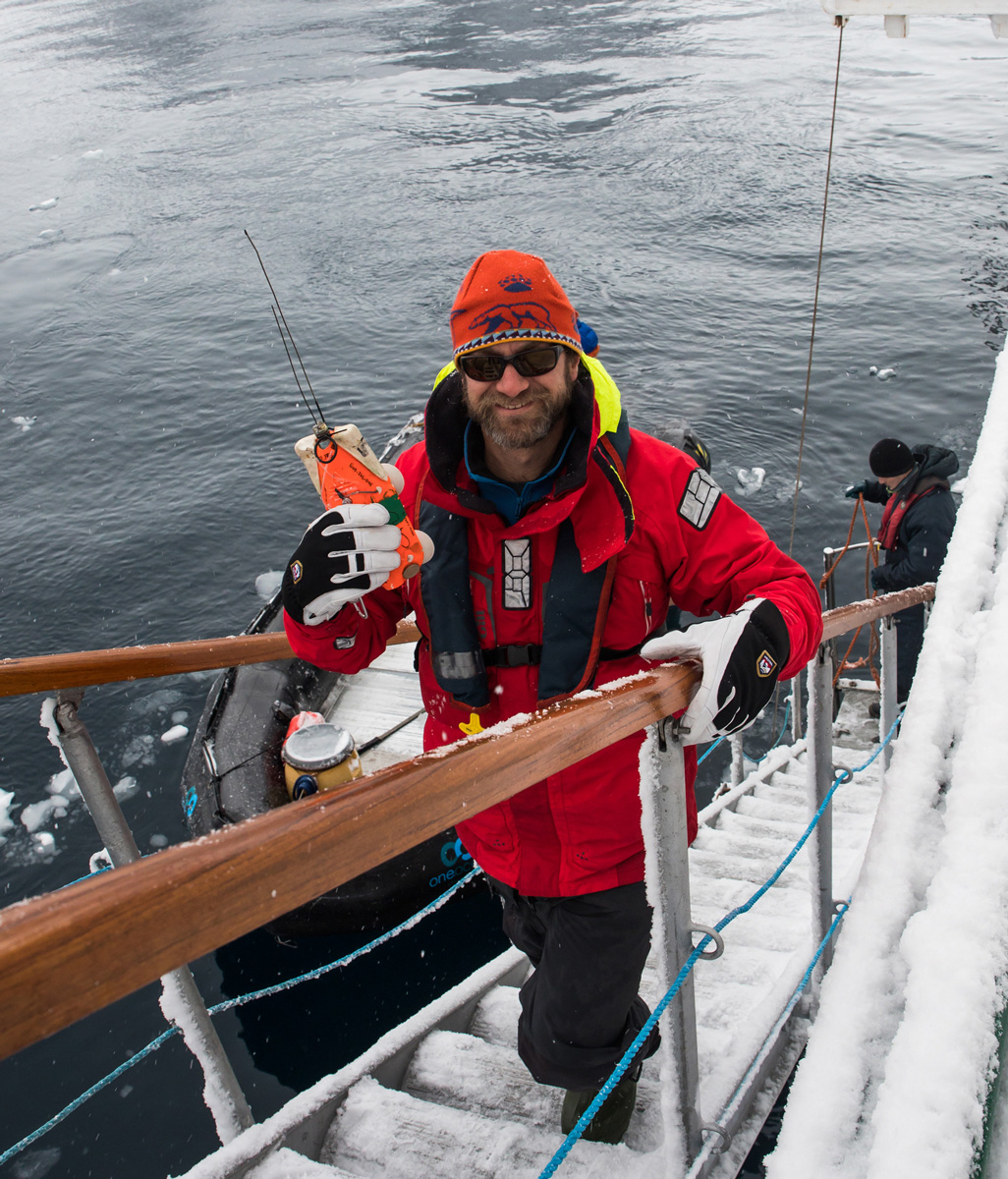For the first time ever, scientists in Antarctica have successfully attached a video tag to a minke whale.
This is providing remarkable footage of their feeding behaviour. Previously, minke whales have only been tracked by LIMPET satellite location beacons. Consequently, Minke whales have been one of the least understood of all the whale species.
Dr. Ari Friedlaender successfully deployed non-invasive suction-cup video tags on a minke whale. The collected data this tag provides is extremely valuable as it will prove unique insights into the behaviour and movements of minke whales in the delicate Antarctic ecosystems.
“What’s amazing to me is how fast the minke swims and how quickly it can feed,” said Dr Ari Friedlaender, an associate professor from the University of California Santa Cruz and lead scientist on the research.
Since 2012, One Ocean Expeditions has cultivated a strong partnership with Dr. Ari Friedlaender and California Ocean Alliance, developing a successful and meaningful ongoing and permanent marine mammal science and conservation program. “These shared values between One Ocean Expeditions and our research group at the California Ocean Alliance make for a potent and effective collaboration,” says Ari. “Without this singular focus, we could not succeed, we could not learn, and we could not protect places like the Antarctic”.
Looking at the footage, Ari explained “The video showed the tagged minke moving at up to 24 kilometers per hour as it accelerates to feed. We could see individual feeding lunges and the expansion of the throat pleats as they filled with prey-laden water. What was remarkable was the frequency of the lunges and how quickly they could process water and feed again, repeating the task about every 10 seconds on a feeding dive. He was like a Pac-Man continuously feeding.”

Being able to see the whales feed and how they navigate the sea ice in the Antarctic provides California Ocean Alliance with a much better understanding of how these whales survive and thrive in Antarctica. This event is a big step in showcasing how scientists can study the minke whales, as before now they were very elusive. There is still so much that we don’t know about these animals. They feed in sea ice, but it is not known how they behave.
“This was also a wonderful opportunity to show guests onboard One Ocean Expeditions’ vessel how we conduct our science and engage with them about these remarkable animals, the threats they face, and what we can do to conserve this unique ecosystem”, explains Ari Friedlaender.
One Ocean Expeditions works closely with Dr. Ari Friedlaender, and this relationship has been fundamental in establishing programs and even sail plans. The one-of-a-kind ‘Marine Mammals in Antarctica’ voyage, for example, visits whale hotspots that Dr. Ari Friedlaender knows are heavily populated by whales. One Ocean Expeditions will also include visits to proposed marine protected areas in Antarctica in conjunction with California Ocean Alliance marine mammal scientists.
Talk to your travel agent to find out more about our marine mammal voyages to Antarctica.
















One Comment
Comments are closed